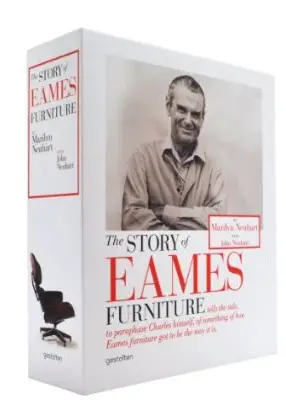Charles and Ray Eames, for one, always tried to find the best solution to satisfy the needs of the modern home dweller with practical -and affordable- pieces of furniture.
During the Mid-Century, in fact, designers measuring themselves against the needs of a modern society, the necessity of a flexible space being one of them. Using screens was one very effective, albeit not new, way to modulate the space in a room according to the needs of its fruitors.
The Eames Design Approach.
To reach this goal, charles and Ray Eames used an experimental process that helped them to achieve new and revolutionary designs.
Taking inspiration form the Screen 100 -designed by Alvar Aalto in the 30s- Charles and Ray Eames developed in 1946 a more flexible and mass-producible product: the Eames Molded Plywood Folding Screen for Herman Miller.
The Aalto’s screen was made of flat strips of wood connected by canvas ‘hinges’ and its main weakness was the low stability. To avoid this problem the Eameses enlarged the strips to 22.5cm -using U-shaped pieces of moulded plywood- and linked them with full-lenght canvas hinges running through all the screen.
In fact, while experimenting with plywood, they realized how some U-shaped cross sections of it were stable enough to stand alone.
They decided to put them together to obtain a screen that would look like wooden waves -same effect of the Aalto’s Screen 100- and complement their molded plywood furniture pieces at the same time.
These two solutions gave to the screen more stability and flexibility. The screen could be folded, shipped, carried and stored much more easily.
Unfortunately, even if they designed it to be mass-produced, the process of inserting the canvas hinges involved a lot of hand work and dramatically increased the production costs, making the screen too expensive and far from the Eameses goal to provide good design at a fair price.
The production of the Eames screen ceased in 1955, but thanks to the introduction of new materials and manufacturing techniques , it has now been reintroduced without compromising the original design.
The Eameses Screen is the perfect example of the Charles and Ray design beliefs: a piece of practical design that allows room for personal statement.
If you want to know the story of Charles and Ray Eames as told by two of their closest co-workers, you should check the interview that I published some time ago. An amazing short documentary were Marilyn and John Neuhart tell about their 40-year-long personal and work relationship with the Eameses at Herman Miller.
Check the Resources pages to learn about more mid-century iconic objects.
If you, instead, would like to read about the story of Charles and Ray Eames and how they created the most amazing furniture of the mid century period, you should definitely give a chance to The Story of Eames Furniture.
An amazing book-interview written by two formal colleagues of Charles and Ray during the legendary years of the Eames Office in Santa Monica. You can find the book here.
If you found this article interesting, don’t forget that you could discover much more about mid-century joining the completely free and spam-proof Mid Century Home mailing list, now!
You will receive only a weekly email with exclusive content that I don’t publish on the blog.

